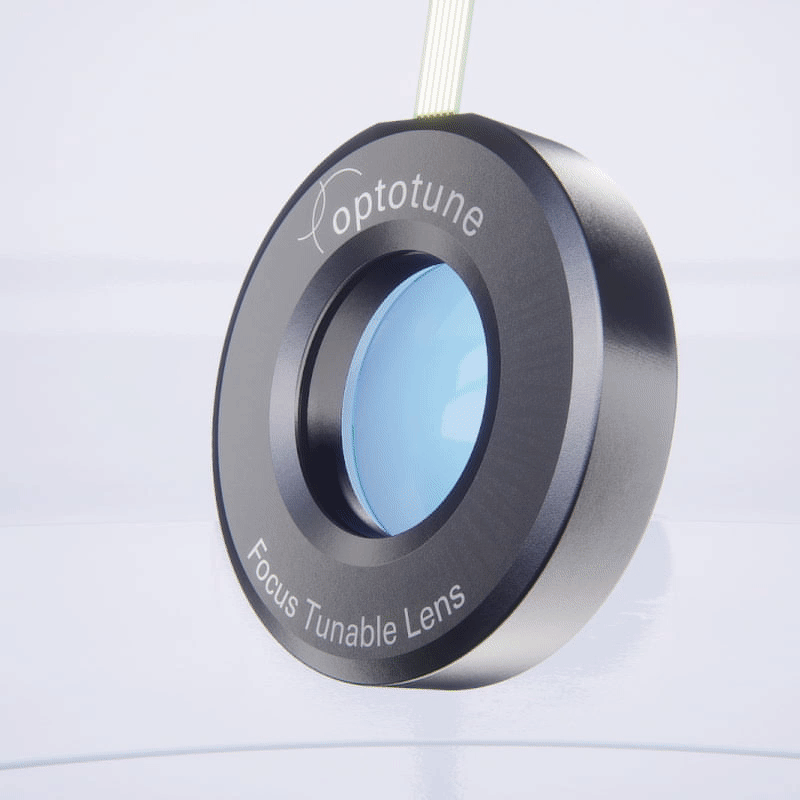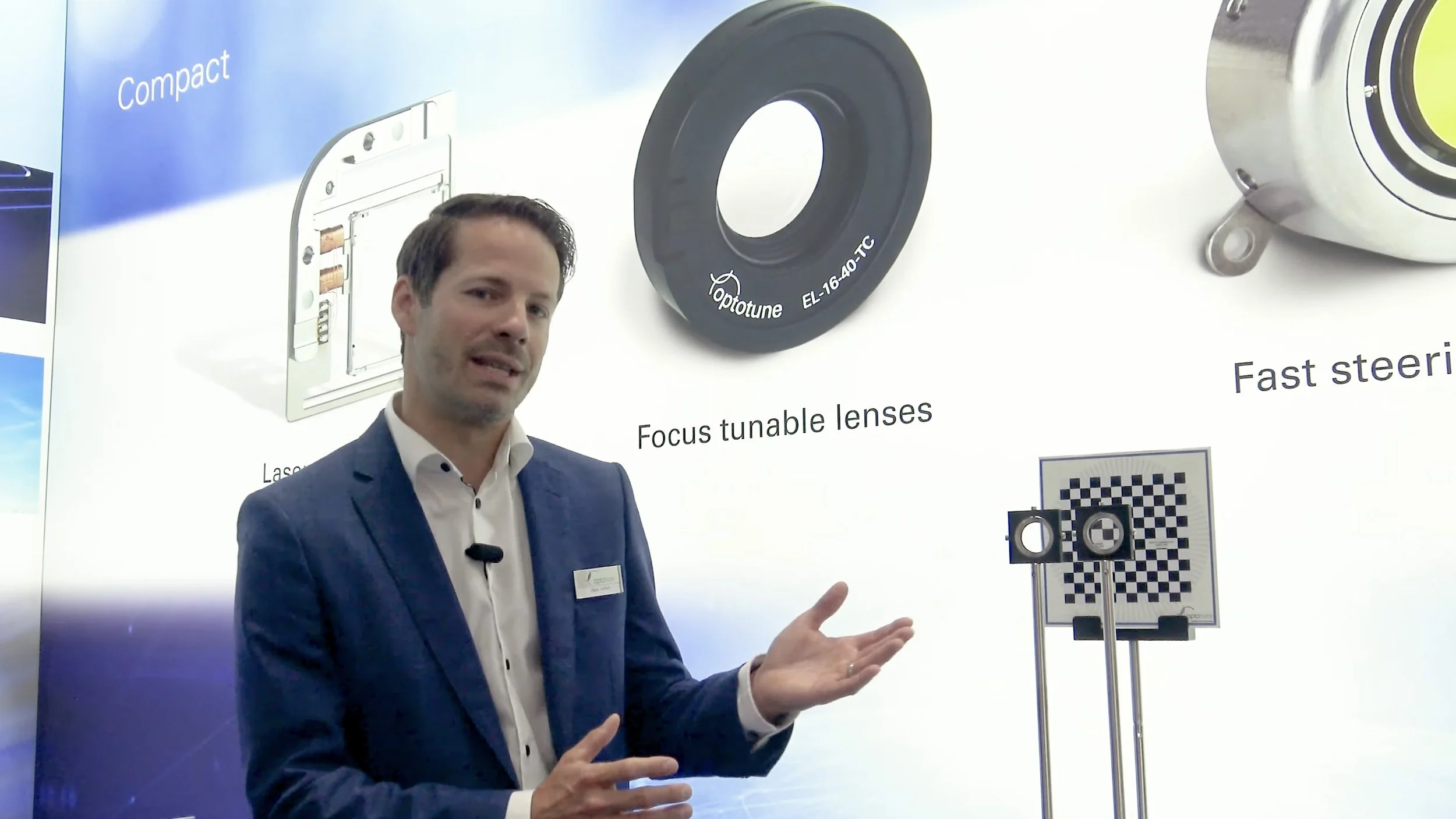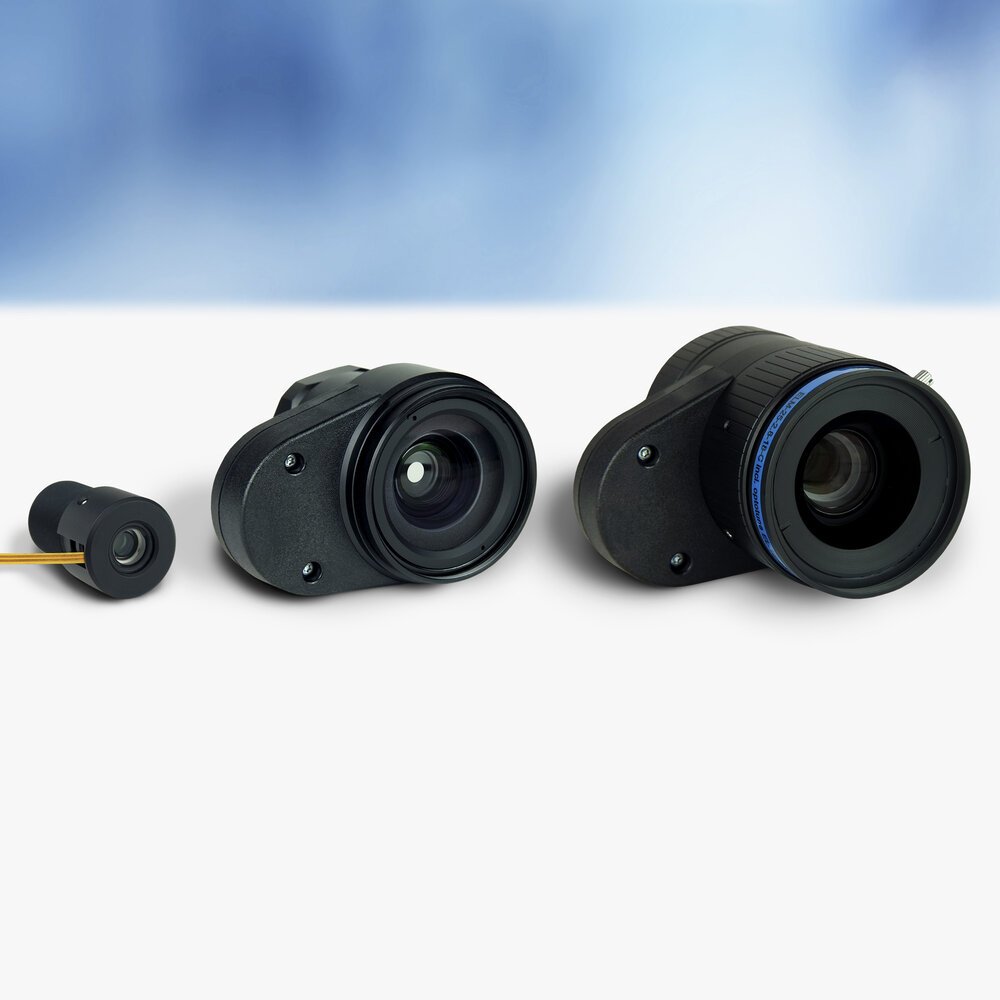Focus tunable lenses
Traditional optics are based on solid glass or plastic lenses, which are moved back and forth to focus or zoom. A very old but successful system, however, is completely different: the eye! It consists of an elastic lens material, which is bent in order to focus. Optotune has developed a series of lenses that basically copy the principle of the eye.
Working principle
Optotune’s focus tunable lenses are shape-changing lenses based on a combination of optical fluids and a polymer membrane. The core element consists of a container, which is filled with an optical liquid and sealed off with a thin, elastic polymer membrane. A circular ring that pushes onto the center of the membrane shapes the tunable lens. The deflection of the membrane and with that the radius of the lens can be changed by pushing the ring towards the membrane, by exerting a pressure to the outer part of the membrane or by pumping liquid into or out of the container.
The working principle of a Optotune focus tunable liquid lens
Advantages
A change in lens radius of several micrometers can have the same optical effect as moving the entire lens several centimeters. Focus tunable lenses thus allow optical systems to be designed more compact and without complex mechanics. High throughput systems benefit from the fast response time of only a few milliseconds. The liquid lens principle guarantees reliable and durable operation avoiding the typical mechanical wear and tear, which allows for billions of cycles. System designs are more robust as they can be completely closed so that no dust can enter. Another advantage becomes obvious in production. The fact that less optical parts are moved combined with the tunability of the radius during operation results in reduced tolerance sensitivity and thus higher yield rates.
The five main advantages of focus tunable lenses over traditional optics:
Compact designs
Fast response
High reliability
Robust system design
Less tolerance sensitivity
Autofocus lens with Optotune’s EL-16-40 integrated
Gravity Compensated Liquid Lenses by Optotune
Standard vs Gravity Compensated Liquid Lenses
Products: focus tunable lenses
Related content: applications
Machine vision
Microscopy
Ophthalmology
Medical
AR / VR
Laser processing















